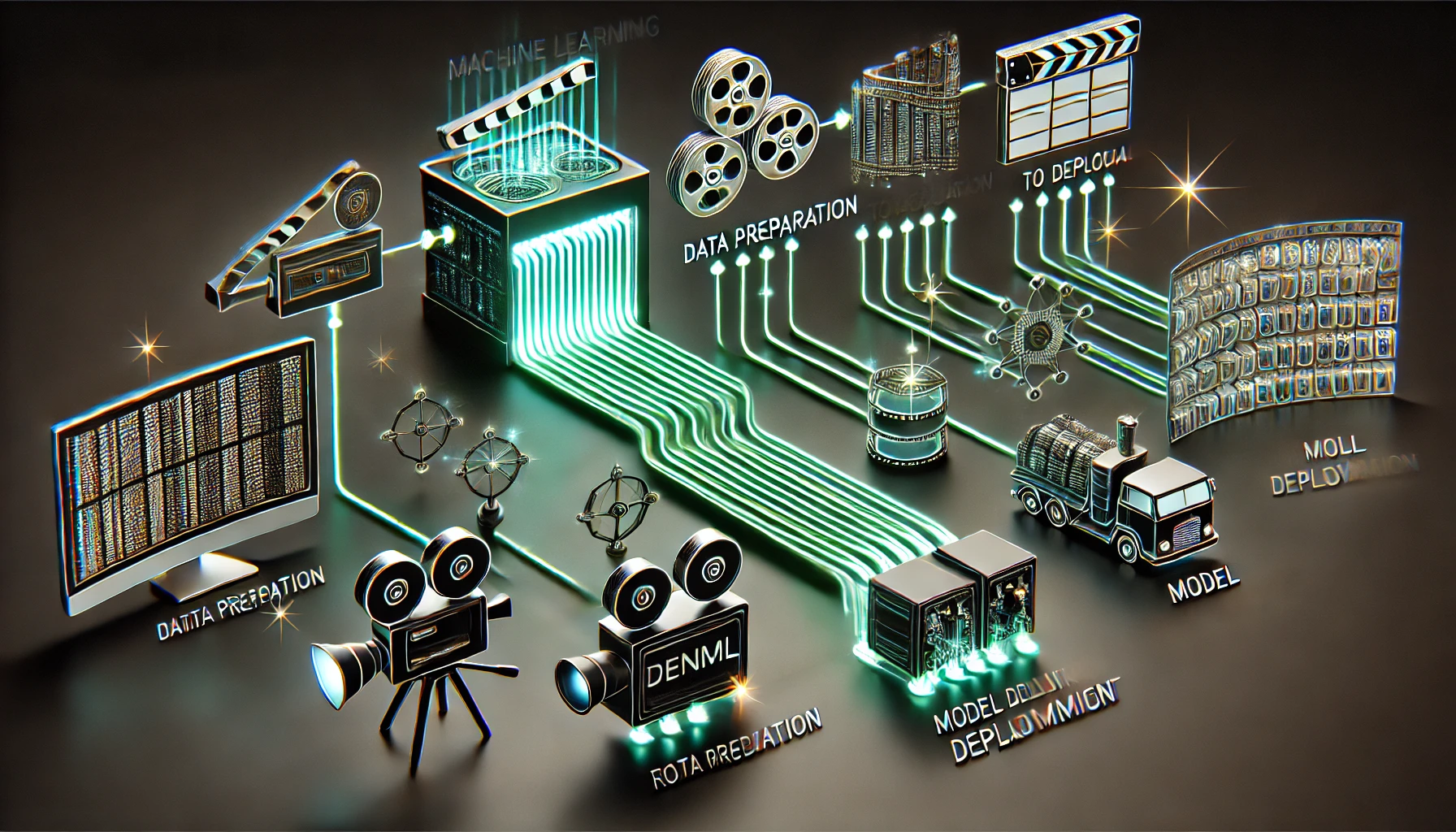From Script to Deployment: Building Efficient ML Pipelines with ZenML
 Riya Bose
Riya Bose
Introduction to Pipelines & Steps with ZenML
When building machine learning models, organizing the development process efficiently is crucial. ZenML is a powerful framework that follows a pipeline-based approach to organize machine learning (ML) workflows, promoting efficiency, repeatability, and collaboration.
But what exactly is a pipeline, and how does ZenML help streamline ML processes?
What is a Pipeline?
Imagine a pipeline like a movie production process. To create a movie, there are several tasks involved—scriptwriting, casting, filming, editing, and distribution. Each task is a step that contributes to the final product, and together, they form a high-level workflow or "pipeline."
Similarly, in ZenML, a pipeline represents a complete ML workflow that typically includes steps like:
Data preparation
Feature engineering
Model training
Model evaluation
Model deployment
How Pipelines Work in ZenML
Each step in a ZenML pipeline depends on the outputs of the previous ones. For example, in a movie production pipeline, you can't start filming without a script, and you can't edit the footage before filming. The same goes for ML workflows: you can't deploy a model without first training and evaluating it.
Using ZenML to Develop, Execute, and Manage ML Workflows
Now that you have a clear understanding of what a pipeline is, let’s walk through a real-world example of creating an ML pipeline using ZenML.
Step-by-Step ML Pipeline Example in ZenML
Let’s take the movie production analogy further to understand each step of a typical machine learning pipeline in ZenML. Here’s how the different stages correspond to the tasks in movie production:
Step 1: Prepare the Script (Data Preparation)
- In any ML project, the first step is preparing the dataset. This is like creating the movie script.
@step
def data_preparation():
data = some_ml_library.load_data()
return data
Step 2: Casting (Feature Engineering)
- After the script is ready, it’s time to cast the actors. In ML, this is similar to extracting and engineering features from the dataset.
@step
def feature_engineering(data):
features = some_ml_library.extract_features(data)
return features
Step 3: Filming (Model Training)
- Once the features are ready, the training process starts—equivalent to the filming stage in movie production.
@step
def model_training(features):
model = some_ml_library.train_model(features)
return model
Step 4: Editing (Model Evaluation)
- After training the model, it's time to evaluate its performance. This is like the editing process where you refine the footage.
@step
def model_evaluation(model, features):
evaluation = some_ml_library.evaluate_model(model, features)
return evaluation
Step 5: Distribution (Model Deployment)
- Finally, you distribute the movie (deploy the model) for the audience to view (or for real-world use).
@step
def model_deployment(model):
some_ml_library.deploy_model(model)
Pipeline Definition and Execution in ZenML
To combine all these steps, we need to define the pipeline that ties everything together:
@pipeline
def movie_production_pipeline():
data = data_preparation()
features = feature_engineering(data)
model = model_training(features)
evaluation = model_evaluation(model, features)
model_deployment(model)
After defining the pipeline, you can run it like this:
if __name__ == "__main__":
movie_production_pipeline()
Why ZenML for ML Pipelines?
Using ZenML provides several advantages:
Repeatability: You can run your pipeline over and over again, ensuring consistent results.
Modularity: Each step is defined separately, allowing for better debugging and experimentation.
Collaboration: ZenML supports collaborative workflows, making it easy to share and improve pipelines with your team.
ZenML’s approach allows you to focus on building your model, abstracting the complexities of managing the end-to-end workflow.
Conclusion
In this blog, we explored how ZenML uses a pipeline-based approach to manage machine learning workflows. We went through a detailed example that aligns the steps in a machine learning pipeline with the stages of movie production. By leveraging the modular and repeatable nature of ZenML, you can streamline your ML processes and enhance collaboration within your team.
So, whether you're working on a small project or deploying large-scale ML solutions, ZenML will help you maintain an organized, efficient, and scalable workflow.
Subscribe to my newsletter
Read articles from Riya Bose directly inside your inbox. Subscribe to the newsletter, and don't miss out.
Written by
